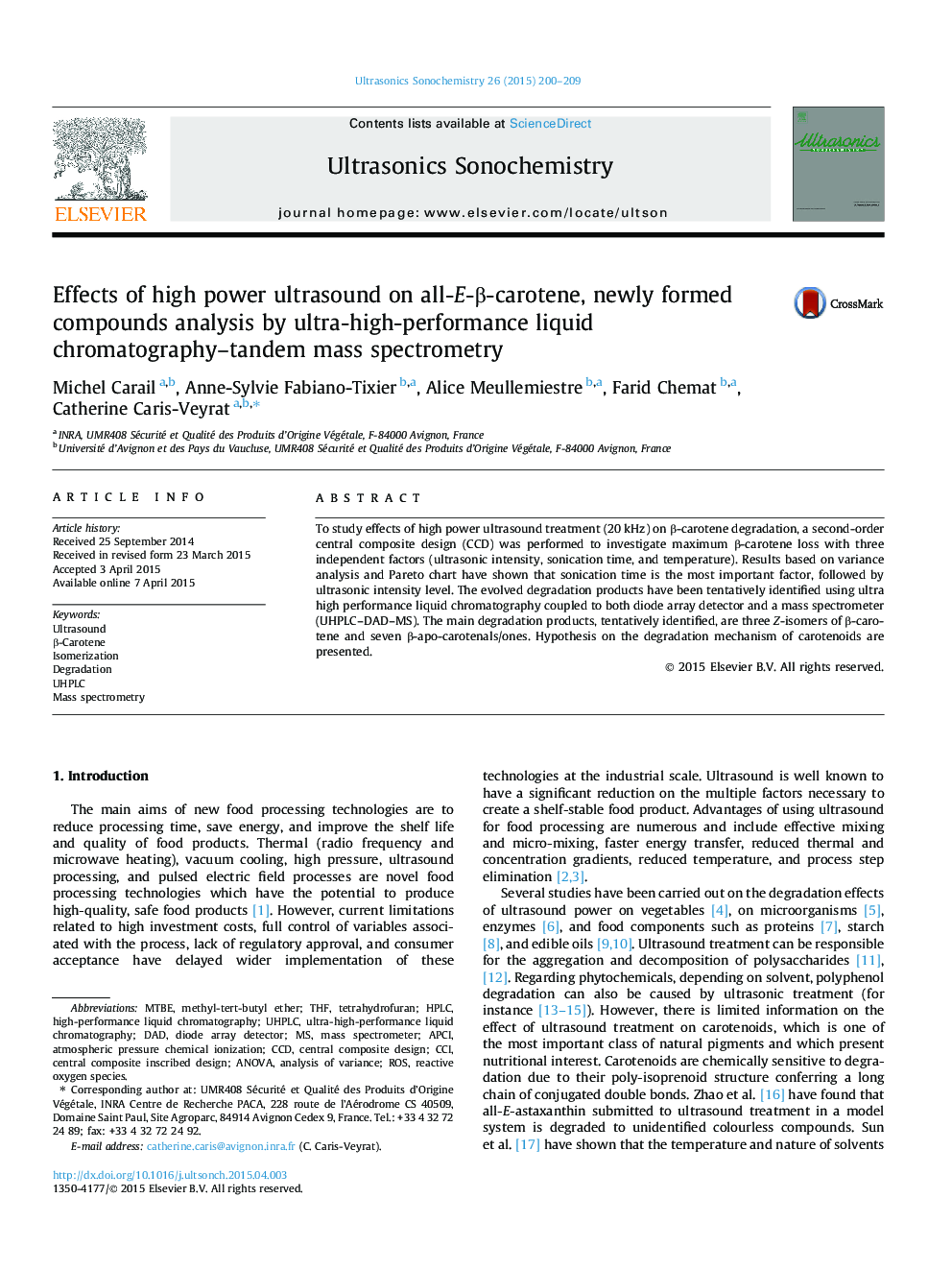| Article ID | Journal | Published Year | Pages | File Type |
|---|---|---|---|---|
| 1265985 | Ultrasonics Sonochemistry | 2015 | 10 Pages |
•β-Carotene is significantly degraded under ultrasound treatment in water under air.•Ultrasonic power and sonication time significantly impact β-carotene degradation.•Under ultrasound β-carotene loss decreased with increasing temperature.•Ultrasound treatment generates isomerisation, oxidation and cleavage of β-carotene.
To study effects of high power ultrasound treatment (20 kHz) on β-carotene degradation, a second-order central composite design (CCD) was performed to investigate maximum β-carotene loss with three independent factors (ultrasonic intensity, sonication time, and temperature). Results based on variance analysis and Pareto chart have shown that sonication time is the most important factor, followed by ultrasonic intensity level. The evolved degradation products have been tentatively identified using ultra high performance liquid chromatography coupled to both diode array detector and a mass spectrometer (UHPLC–DAD–MS). The main degradation products, tentatively identified, are three Z-isomers of β-carotene and seven β-apo-carotenals/ones. Hypothesis on the degradation mechanism of carotenoids are presented.
